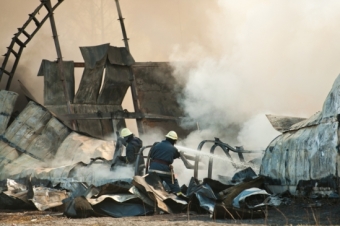
November 9, 2022
Forseeing Failure
Researchers develop a way to predict the failure of solid metal materials from the first stage of cyclic stress
(Santa Barbara, Calif.) — Take a wire paperclip. Now, bend it back and forth in the same spot 15, maybe 20 times. Chances are the paperclip will have broken before you finish. This is due to what’s called metal fatigue, which occurs when a metal component is cyclically stressed until it fails.
While the broken paperclip is a trivial example of metal fatigue, the phenomenon is a huge problem in the wider world. “Most unexpected failures — bridges, airplanes, oil rigs, heart valves — fail by that process,” said UC Santa Barbara materials science professor Tresa Pollock, who specializes in the mechanical and and environmental performance of materials in extreme environments. Virtually any structural metal that is subjected to cyclic stress — deformations, vibrations, extreme temperatures, impacts and the like — is vulnerable, with results that can cost hundreds of billions of dollars each year. To forsee and avoid such catastrophic fates, Pollock and fellow researchers at UCSB, University of Illinois at Urbana-Champaign and Université de Poitiers in France have developed a theory that predicts the limits to which metals can be subjected to cyclic stress before failing. And they can predict failure from the first cycle. Their research is published in the journal Science.



